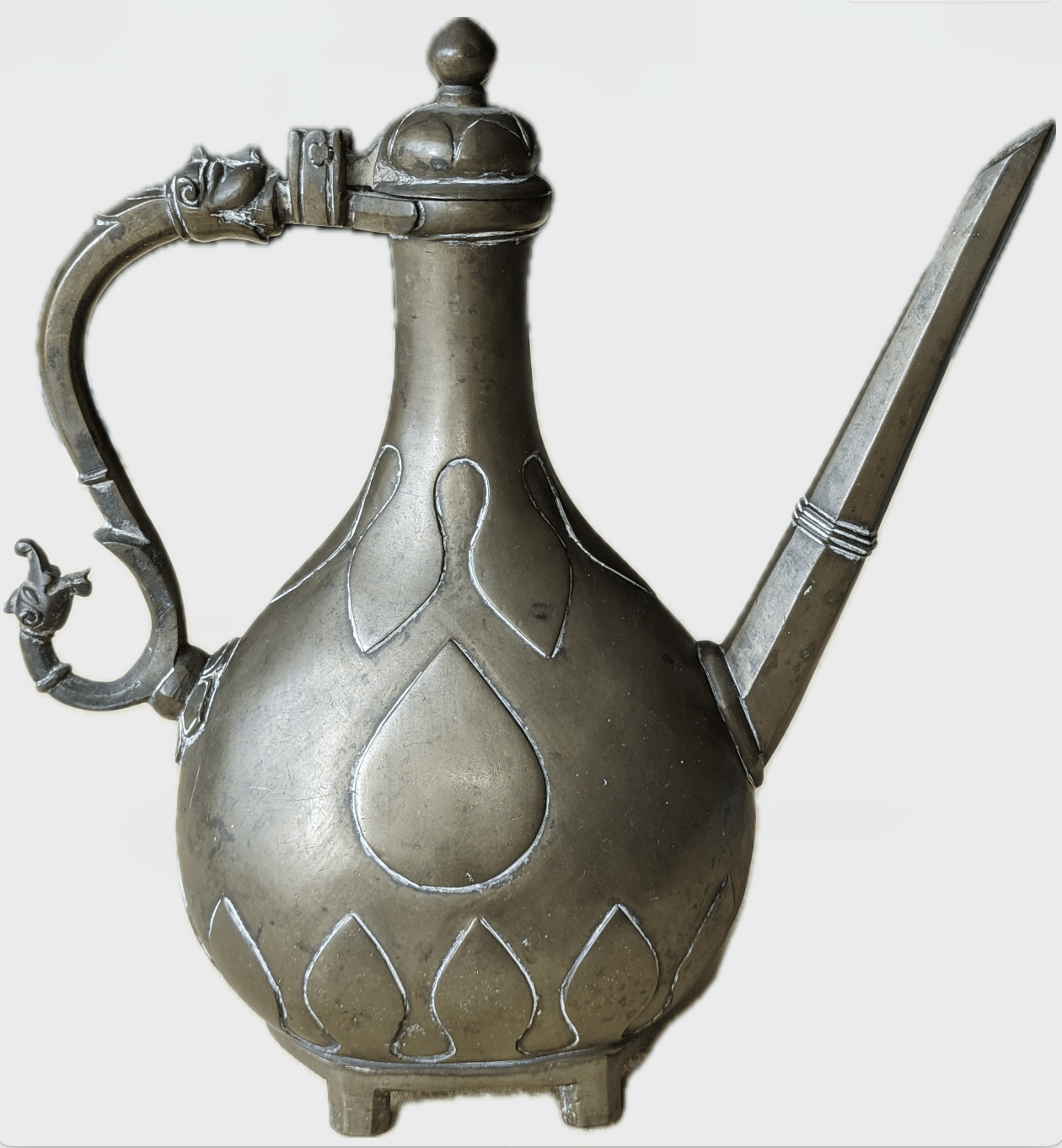
The body, base, handle, and spout of this pitcher were cast separately in brass and then assembled. From an engineering perspective, I am impressed by the quality of the castings and the craftsmanship in joining the components. From a design perspective, the pitcher is a mish-mash of elements. The body of the pitcher with its lush female curvature has shapes hinting of leaves and moisture. It rests on a purely functional base. The spout is a straight hexagonal shaft, then the handle, again curved, has whimsical animal heads on both ends. India’s “land of contrasts” is embodied in this pitcher.
I acquired this brass pitcher as a memento of a famine relief project in Bihar, India. It was in the scrap pile of a shop selling brass cooking pots and other brass items. I have no idea of its age or its worth, though I once saw the identical item on display in the window of a museum in Toronto.
In the summer of 1967, I was temporarily reassigned from my Peace Corps assignment, training irrigation well maintenance workers, in the Punjab to work on a joint well-drilling project with UNICEF, CARE, and Catholic Relief Services. We drilled wells in villages in the Bihar countryside that were experiencing a severe two-year drought.
In these villages, everyone was a farmer – living off the land – and the land was enduring its second year without rain. The area was poor. Roads were just unimproved lanes between the dried-up fields. There was no electricity, no communications infrastructure, and not even battery-powered radios. With no rain, there were no crops, and the ground was dry and cracked. There was nothing for people to do, and nothing for them to eat – except emergency food rations. I saw the effects of malnutrition in the listless children with swollen bellies and the thin bony legs of the emaciated adults. The one pair of bullocks (oxen) I saw was so weak that they could hardly walk, much less pull a cart carrying pipe for the water wells.
Because of the drought, the villages’ open, hand-dug wells were drying up. Our technique for digging a well a few inches in diameter, using pipe that then became part of the pump, enabled us to dig deep wells quickly, reaching down to water below the level of existing wells.
I learned a lot about the culture while drilling these wells. We were asked to put hand pumps in schoolyards as they were public spaces. People asked for two pumps so that the lower castes, who were not allowed to access water from the same wells as the rest of the community, could have a well too. At one school, we stood around waiting to go into the schoolyard. I couldn’t tell what we were waiting for. So, eventually I went into the yard myself to look at the spot we had been discussing. Suddenly I noticed the schoolmaster’s wife defecating in the corner of the yard. Why there? The villagers defecated in their fields, the schoolmaster’s family were outsiders and had no fields of their own. It was their only choice. Why did I not see her? Clothing washed repeatedly in muddy water becomes the color of the dirt. She blended right in. It was obvious to everyone but me.
The quality of the pumps we were installing was so poor that I could see they were going to fail soon after the project was completed. One of the emotionally hardest things I did in Bihar was to return to a village where we had drilled down more than 100 feet by hand for water, with no results. I did not want to go back to that place. But, as I rode my UNICEF-donated motorbike into the village, I saw, with a shock of relief, a woman walking away from the well with a bucket of water on her head.
The pitcher reminds me of the desperate straits of these villagers, and what I thought were my fruitless efforts to provide them with water. According to Wikipedia, it was due to the relief efforts of many organizations that so few people perished during “the worst drought in living memory.”




